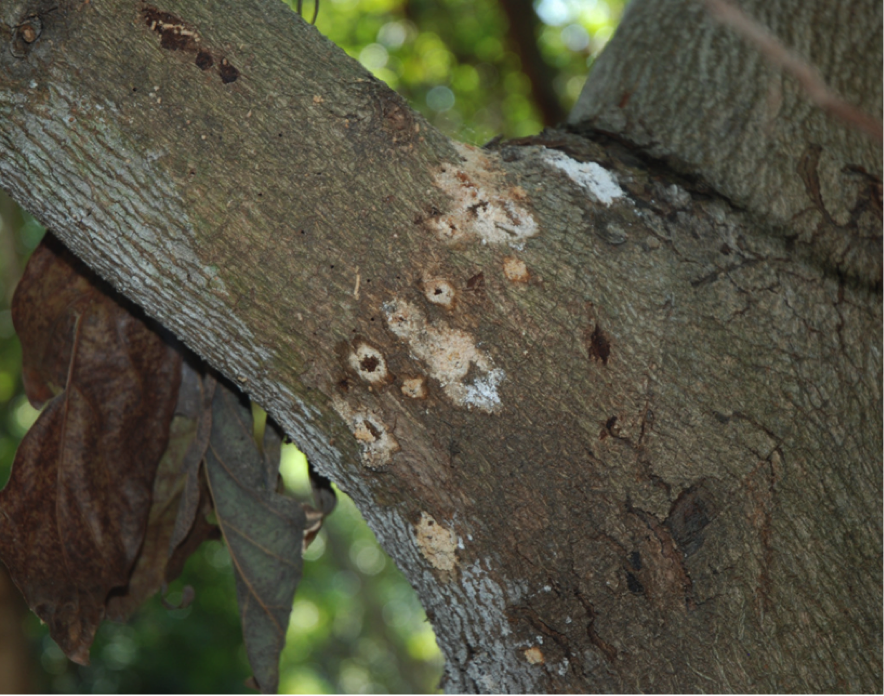Since the discovery of polyphagous shot hole borer (PSHB) in commercial avocado groves in San Diego County, Commission staff have been working with researchers and impacted industry members to communicate critical information to limit the spread of the pest complex. While efforts to identify possible chemical control materials continue, grove sanitation measures constitute the primary activity growers can undertake to further limit the spread of the beetle/fungus complex.
Infected fallen branches and heavily infested branches still on the tree need to be eliminated. One option may be to burn these branches. With the forecast for showers this weekend, conditions may be more appropriate after the rain. Of course any burn activities would need to be conducted in a safe place and follow local permitting requirements. If chipping of branches occurs, rather than attempting to solarize the treated woodchip pile, another option is to apply a registered insecticide and then cover removed material well with thick plastic or a tarp.
Scouting of all groves also remains an important activity. When there is a new infestation the beetle often times begins to settle in the crotch area at the base of tree limbs. Currently a treatment of pyrethrin on and around the crotch or scaffold is recommended for some possible control (Reuben Hofshi).
The sterilization of tools to prevent the spread of the disease with either 25 percent household bleach, Lysol® cleaning solution, or 70 percent ethyl alcohol is also recommended, along with avoiding removal of any debris (leaves, stems, twigs) from an infected grove.
